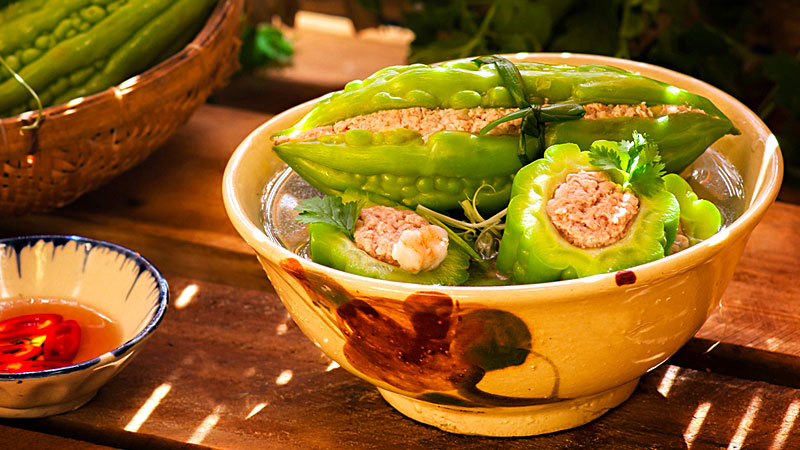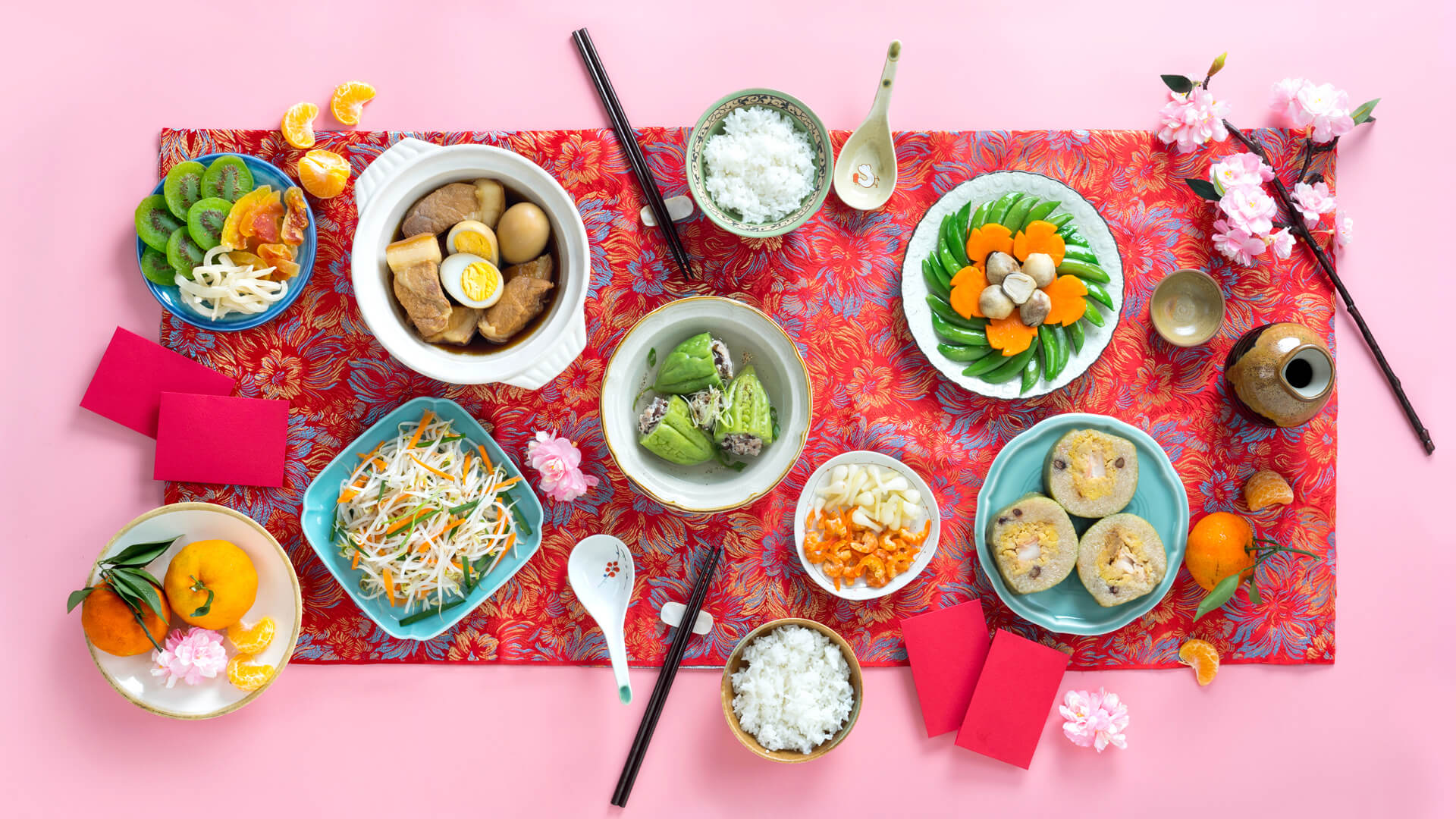The last meal of the year is a very warm time, connecting everyone to sit together to reminisce about the old year and discuss the new year. Therefore, deep in the subconscious of every Vietnamese person, no matter which region or country, the Tet meal always connects family and always has a sacred meaning in every Vietnamese family.
Traveling across the country during Tet, we encounter different culinary pictures between the three regions of North - Central - South. Originating from external factors such as geography, climate, and different cultures, each region has different variations of dishes, although not too luxurious in terms of ingredients, but very typical, unique and attractive.
The delicate and skillful feast of the North
As the land where many kings and lords have chosen to make their capital, the Tet feasts of the Northerners always show sophistication and ingenuity. They pay attention to form and harmoniously combine wet and dry dishes, meat and vegetables.
The traditional Northern Tet tray usually consists of 4 bowls and 4 plates, symbolizing the four pillars, four seasons, and four directions. Wealthier families have 6 or 8 bowls and plates, symbolizing prosperity.

Northern Tet trays are diverse and colorful.
Nowadays, with the busy pace of life, traditional dishes are still indispensable in the New Year's Eve meal and the three days of Tet. Banh Chung is an indispensable dish not only in the traditional Tet cuisine of the North but also of the whole country. Green Banh Chung is considered the soul of the traditional Tet, expressing the quintessence of heaven and earth through the skillful hands of people.
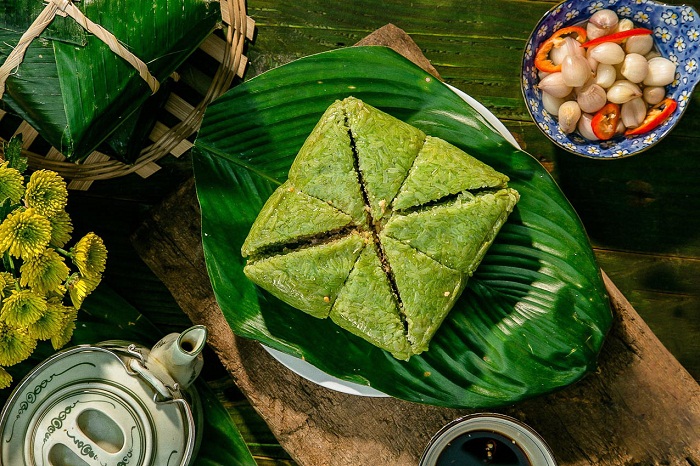
Green Chung cake encapsulates the Vietnamese soul.
Each dish is decorated eye-catchingly, the overall harmony and variety of colors: golden chicken dotted with shredded lemon leaves, red sticky rice like gac fruit, clear jelly-like meat, harmonious soup, dry kohlrabi or papaya salad, delicious and crispy pickles. Along with that, the soups are also rich and diverse: vermicelli with chicken gizzards, stewed pig's feet with bamboo shoots, meatballs... Every dish is rich in flavor, making people forever remember the taste of Tet in their homeland.

Every dish is rich in flavor, making people forever remember the taste of Tet in their homeland.
The taste of thrift and sharing on the Tet tray in the Central region
The people of the Central region are meticulous and meticulous, so the dishes for Tet are also carefully prepared. Looking at and enjoying the Tet dishes of the people here, one can feel the echo of thrift and sharing.
The ancestral altar is never without incense during the holidays, especially on the first day of the festival, people in the Central region will definitely make vegetarian offerings. Dishes such as raw vegetables, spring rolls, vermicelli soup, white rice, stir-fried dishes, braised meat and sometimes braised fish or curry, boiled chicken... are meticulously arranged on each small plate.

Because the weather in the Central region is quite harsh, some years it's hot and some years it's cold, so the dishes are mainly weather-resistant.
In addition, people in the Central region also make banh tet, a cake with a flavor very similar to banh chung. Besides, there are many other types of cakes placed on the Tet tray such as banh to, banh in...
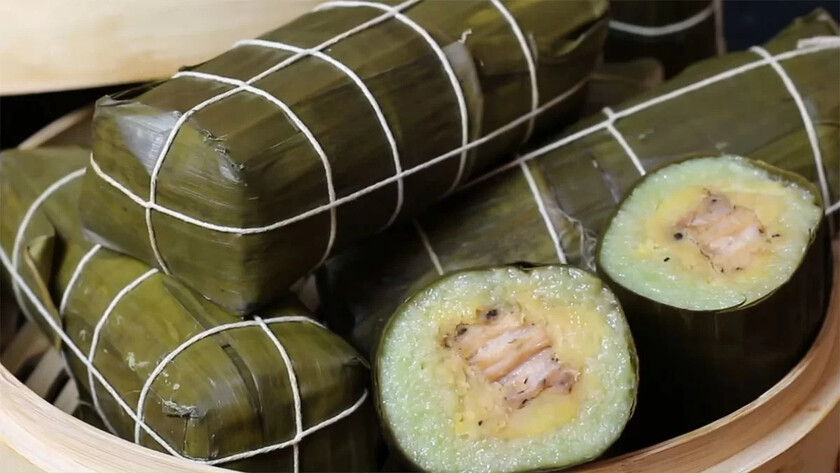
Banh tet of the Central Vietnamese people.
Tet cuisine of this region also cannot lack sour sausages and fish sauce. Especially in the ancient capital of Hue, where royal dishes are still preserved, the Tet tray is even more meticulous and elaborate. Sour shrimp and pork, grilled beef rolls, shrimp cakes, and fig salad are always a must. Some places also have specialties such as beef stew and braised lean meat.

Cha Phuong - a dish offered to the king during Tet in Hue.
In the North, there are pickled onions, while pickled vegetables are a specialty of Tet in the Central region. With simple and easy-to-make ingredients such as carrots, papaya, pickled onions... pickled in salty and sour sauce, creating jars of pickled vegetables full of color and flavor.
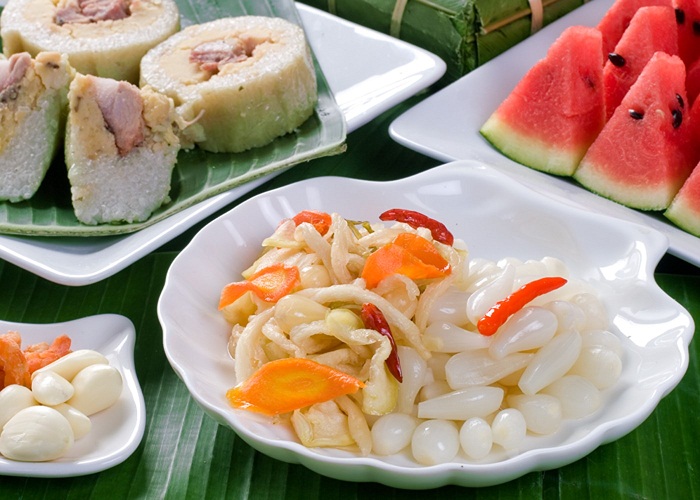
In the North, there are pickled onions, while pickled vegetables are typical of Tet in the Central region.
The simplicity and generosity of the Southern Tet tray
The South is famous for being a simple land with simple, generous people. Favored by nature, with abundant products and the exchange of many cultures, the Southern Tet feast is always diverse, complete, and not restricted in form.
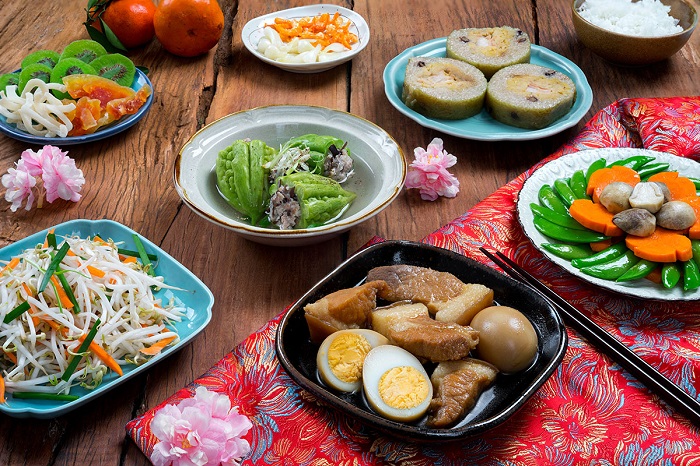
The culinary culture of daily life as well as Tet in the South is often simpler than in the North and Central regions.
Perhaps because of that, the culinary culture of daily life as well as Tet in the South is often simpler than that of the North and Central. Banh tet, braised pork and bitter melon soup are 3 typical dishes during Tet in the South.
In the South, there is still a folk song:“The bird calls three times on the river/ Hurry up and choose sticky rice for the end of winter and the coming Tet”On Tet, people in the North eat banh chung, people in the South eat banh tet (also known as banh don).

Southern banh tet has a variety of sweet and salty fillings and colors, like the generous and open-minded character of the land and people here.
An indispensable dish during Tet in the South, regardless of whether the family is rich or poor, is braised pork with egg - also known as braised pork with egg, braised pork with coconut water. The dish is a harmonious combination of yin and yang, of a square piece of braised pork with egg and a pure white egg immersed in sweet coconut water, wishing for a new year full of fulfillment.
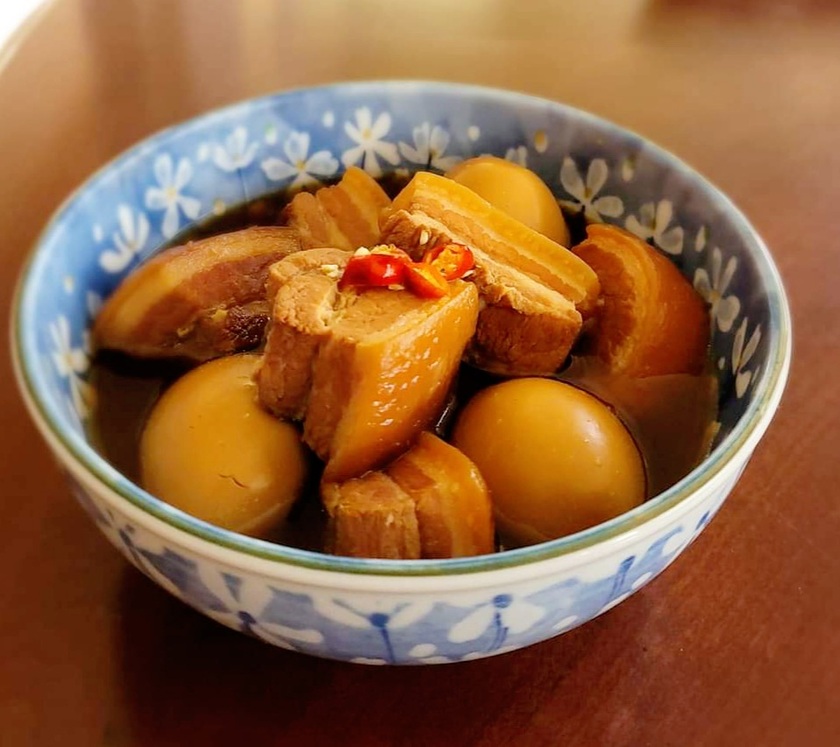
Braised pork belly - an indispensable dish on the Tet holiday tray of Southern people.
Bitter melon soup stuffed with meat or snakehead fish is favored with the wish to overcome the troubles of the old year and welcome a peaceful new year. In addition, there are many salads to prevent boredom such as lotus root salad, chicken salad with Vietnamese coriander, dried shrimp and pickled onions...
Southern people often show their respect to their ancestors by putting their heart into the spring feast, enjoying the salty, sweet, sour, spicy, and bitter flavors in each dish, at the family reunion dinner on the first day of the year.
